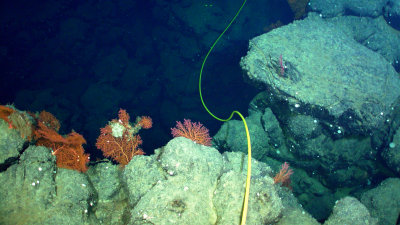The realization of a trans-Arctic submarine cable will speed up communications between Japan and Europe by 30-40%.

Due to the effects of global warming, sea ice is decreasing in the Arctic Ocean. It is considered dangerous that the decrease in sea ice area will lead to the destruction of ecosystems and the further acceleration of global warming, and there is a view that it has also led to the intensification of geopolitical conflict between Western countries and Russia.
However, on the other hand, it is also a big business opportunity, and there are multiple Arctic submarine cable layer plans, and it is expected that the speed of voice and data communication will be significantly improved.
A Warming Arctic Emerges as a Route for Subsea Cables --WSJ
Concluding a MoU with Cinia on the Arctic Cable Business Initiative | Arteria Networks, Inc.
https://www.arteria-net.com/news/2022/0216-01/
Russia Builds Polar Express Subsea Cable along Arctic Coastline --Submarine Networks
https://www.submarinenetworks.com/en/systems/asia-europe-africa/polar-express/russia-builds-polar-express-subsea-cable-along-arctic-coastline
Submarine cables, which bundle optical fibers, are responsible for about 95% of voice and data communications conducted between continents, and more than 400 cables are spread all over the world.
World map 'Submarine Cable Map' that shows the location of submarine cables in the world at a glance --GIGAZINE

In general, the delay in communication speed is roughly proportional to the length of the cable. The distance between continents is closer on the Arctic side than on the Antarctic side, and it is expected that if a cable that goes through the Arctic Ocean can be laid, it will be possible to communicate at a higher speed than before. In one example of the analysis, communications between London and Tokyo are expected to be 30% to 40% faster than existing routes across Egypt.
Alaska-based Far North Digital, Finnish telecommunications company Cinia, and Japan's Arteria Networks are working on a fiber optic submarine cable laying project (Far North Fiber) that connects Asia and Europe via the Arctic Ocean. is.
The scale of the project is about 1 billion euros (about 130 billion yen), and the total length of the cable is about 14,000 km. We will conduct a survey using ships from 2023 and plan to start providing services by the end of 2025.
On the other hand, as a project by the Russian government and a state-owned company, the seabed via the Arctic Ocean connecting Murmansk, the largest port city in the Arctic Circle located 2000 km north of Moscow, and Vladivostok, the largest city in the Far East facing the Sea of Japan. There is a cable layout design drawing ' Полярный экспресс (Polar Express) '.
Полярный экспресс

The total length of the cable is 12,650 km, and the cost is about 65 billion rubles (about 110 billion yen at the time of planning). According to Morsvyazsputnik, a state-owned company responsible for cable operations, laying work began on August 6, 2021 in the village of Teribelka in the Murmansk region on the banks of the Barents Sea. It is said that it will be laid to Siberia in 2024 and is aiming to complete the construction by 2026.
According to the Wall Street Journal, Quintillion's CTO Matt Peterson, who owns 1180 miles of submarine cables along the coast of Alaska, said, 'Laying submarine cables in the Arctic Ocean is not trivial. You can only work during the summer when the ice isn't closed, and the movement of the icebed can cause the cables to break. '
However, Quintillion is also planning to lay a new cable connecting Asia and Europe, and after completing the route between Asia and Alaska over three years, it plans to start between Canada and Europe.
The Global Impact of a Trans-Pacific Fiber Optic Cable Route --Quintillion
https://www.quintillionglobal.com/the-new-information-highway-the-global-impact-of-an-arctic-fiber-optic-cable-route/
Far North Digital co-founder Ethan Berkowitz, who is involved in the Far North Fiber project, said that submarine cables across the Arctic Ocean are an essential infrastructure, even before sea ice reduction became a problem. He said he was thinking. 'Many of the problems with submarine cables being cut are caused by the roughening of the seabed by ships and the desire to unload them,' Berkowitz said. No problem will occur. '
Related Posts:
in Hardware, Posted by logc_nt






